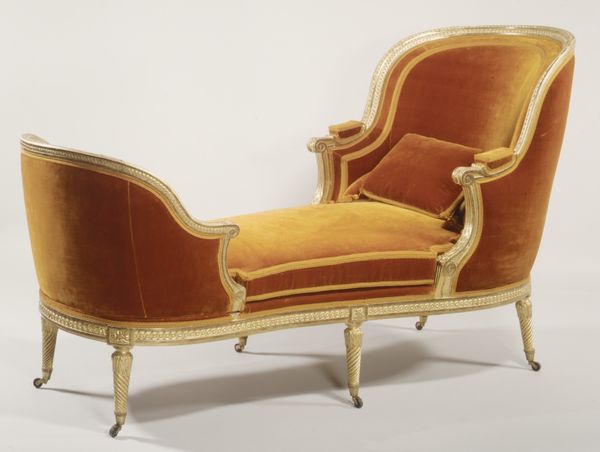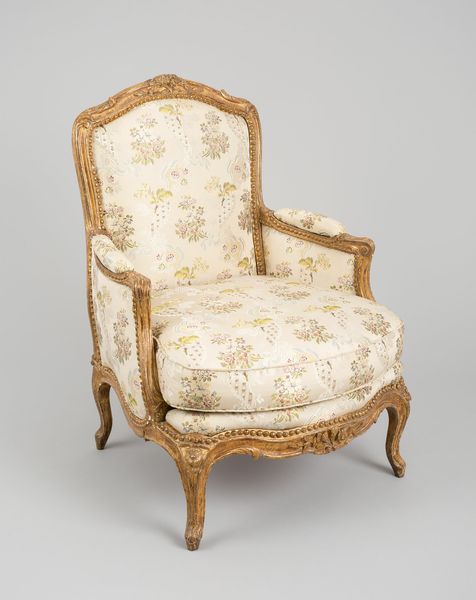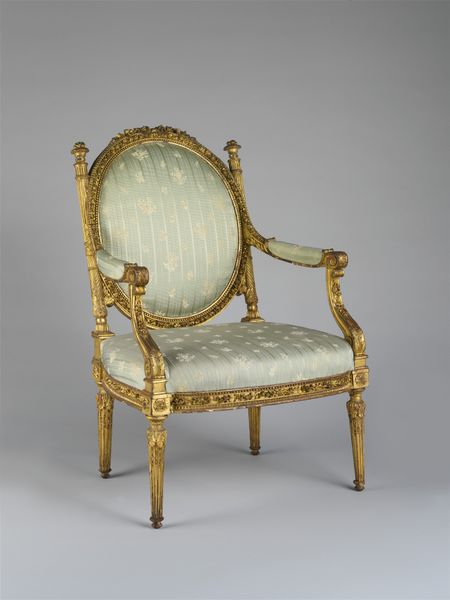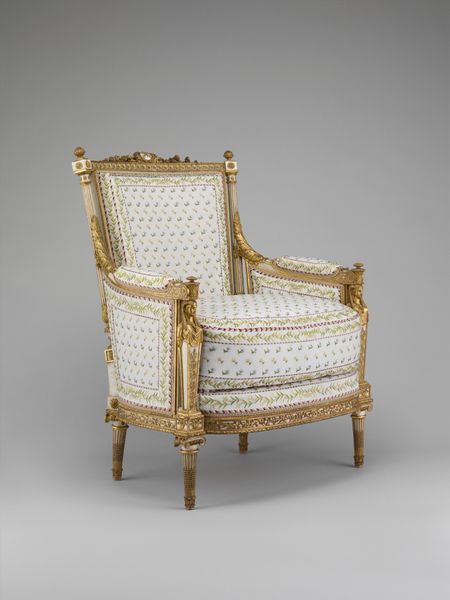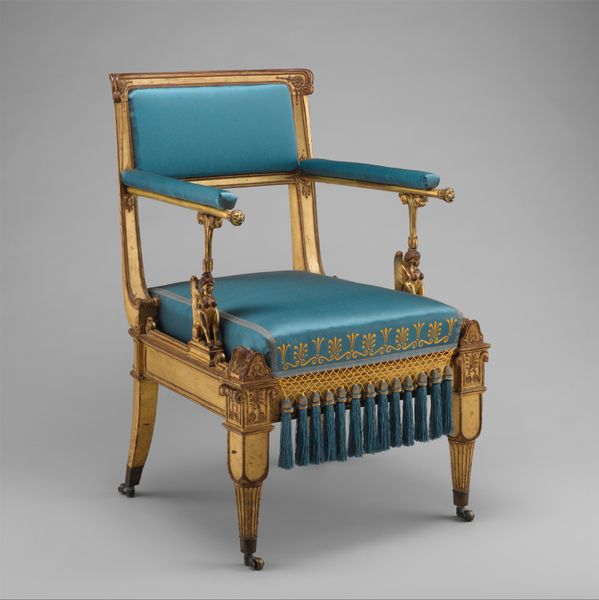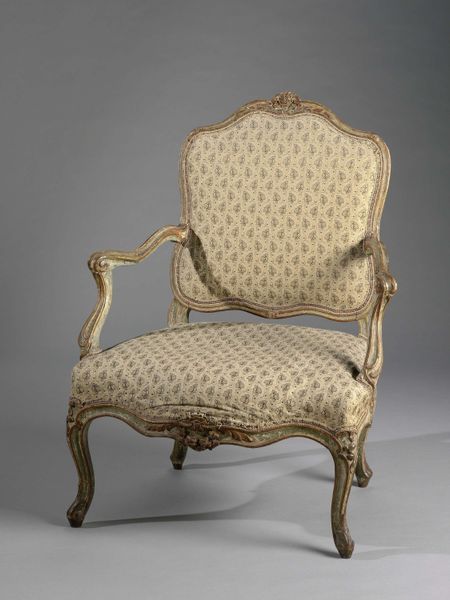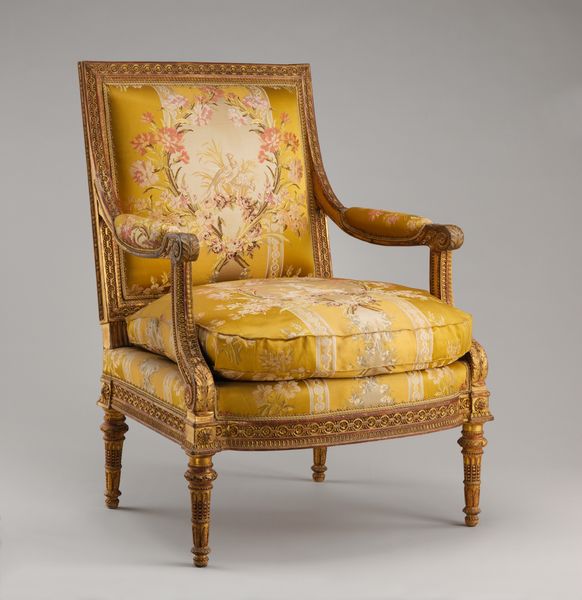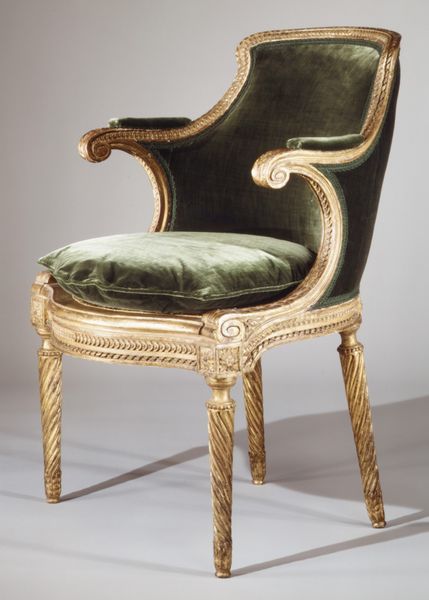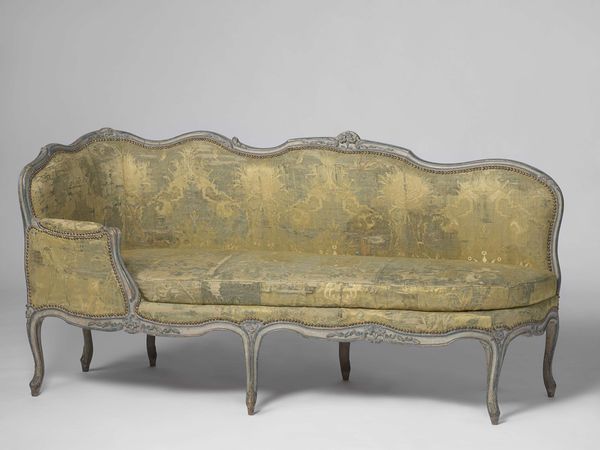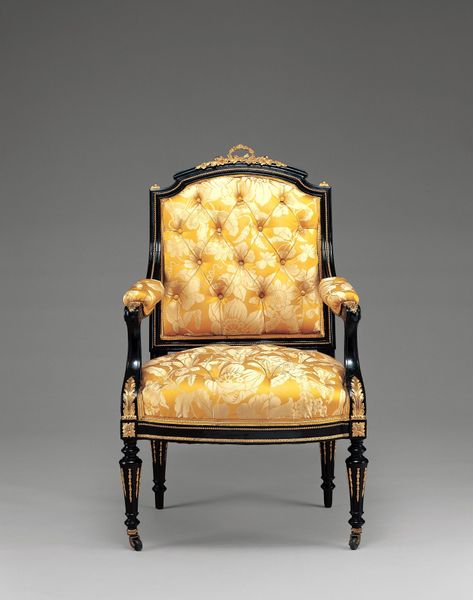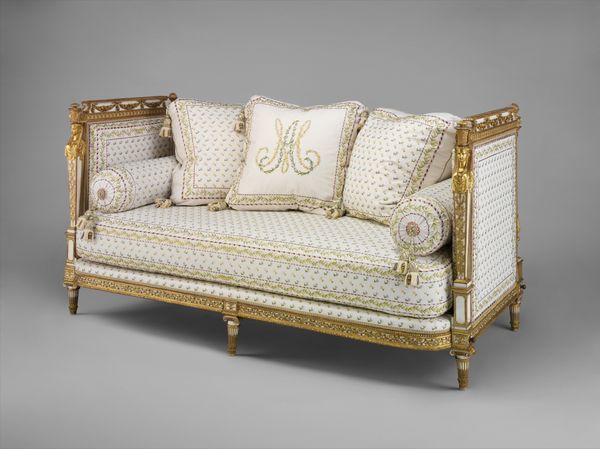
sculpture
#
neoclacissism
#
furniture
#
form
#
sculpture
#
decorative-art
#
realism
Dimensions: Overall (Confirmed): 39 x 72 1/4 x 32 1/4 in. (99.1 x 183.5 x 81.9 cm)
Copyright: Public Domain
Editor: Here we have Andrei Nikiforovich Voronikhin's "Settee," created in 1803. It's currently held at the Metropolitan Museum of Art. It strikes me as an object designed for power, but the pale blue fabric softens the overall effect. What sort of statement do you think this piece is making? Curator: Notice how the giltwood frame supports the soft blue upholstery. The eagle heads adorning the armrests…they aren't just decorative. The eagle, an ancient symbol of power, resurges during the Neoclassical period. But ask yourself, what does the pairing of this symbol of imperial might with such domestic object mean? Editor: It's definitely a contrast. I guess it’s about projecting status even within the private sphere of the home. It's not just a functional object. Curator: Precisely. Consider the repetitive patterns in the fabric. Are these horseshoes, perhaps? The horse often speaks to wealth and elevated status in a similar fashion. The details embed aspirations for luxury. Can you sense how furniture like this could also perform a cultural function, reflecting on the values of its commissioner? Editor: Definitely. The more I look, the more it seems every element contributes to a statement about wealth, influence, and this resurgence of classical ideals. So, the Neoclassical style wasn’t just about aesthetics; it was loaded with cultural meaning. Curator: Indeed. An object is a complex reflection of a time and place; by learning to 'read' the symbolism of its period we begin to engage more fully with the intentions and values it carries. Editor: It is more than just decorative! Thanks. Now I see layers I would have missed otherwise.
Comments
No comments
Be the first to comment and join the conversation on the ultimate creative platform.


